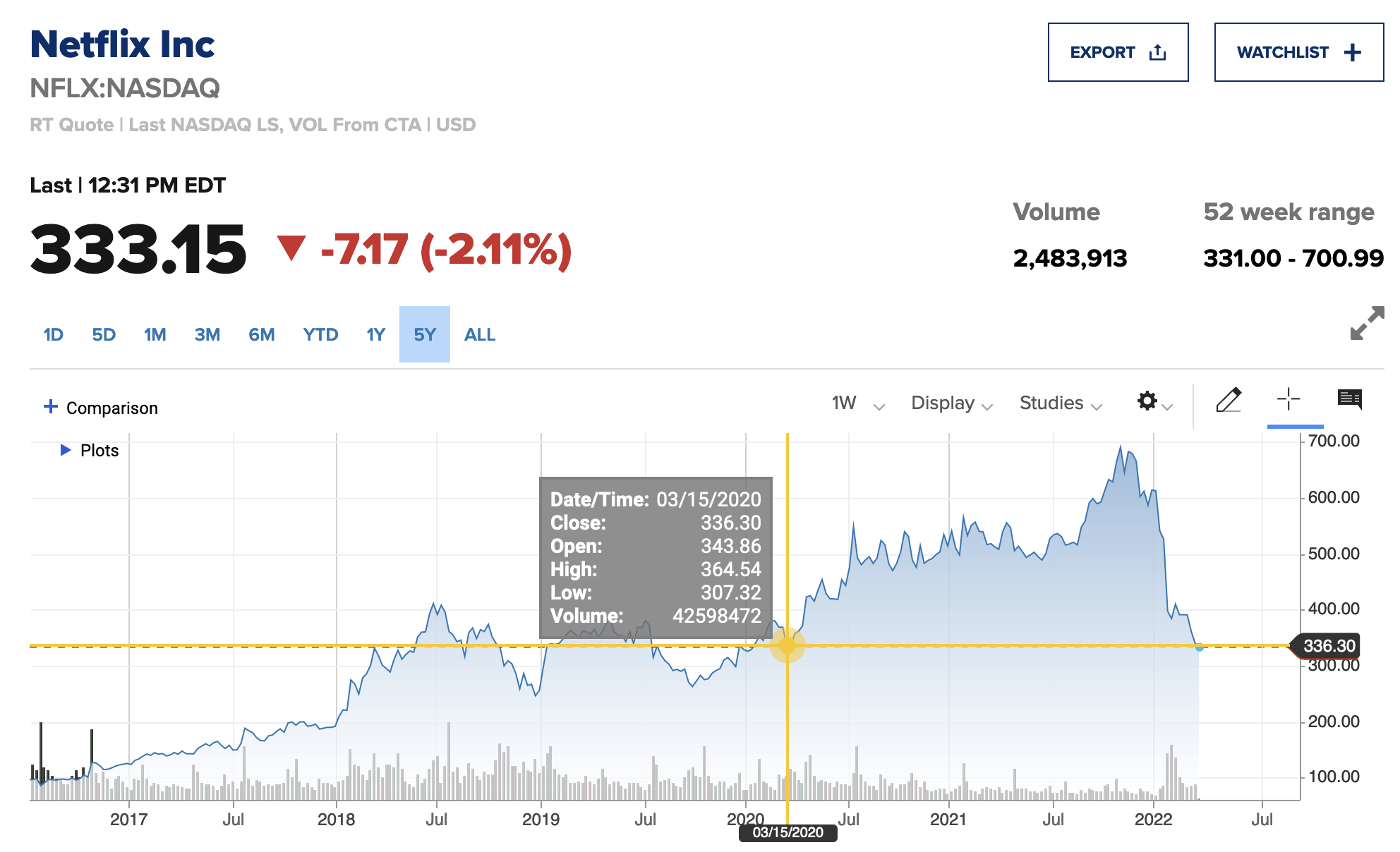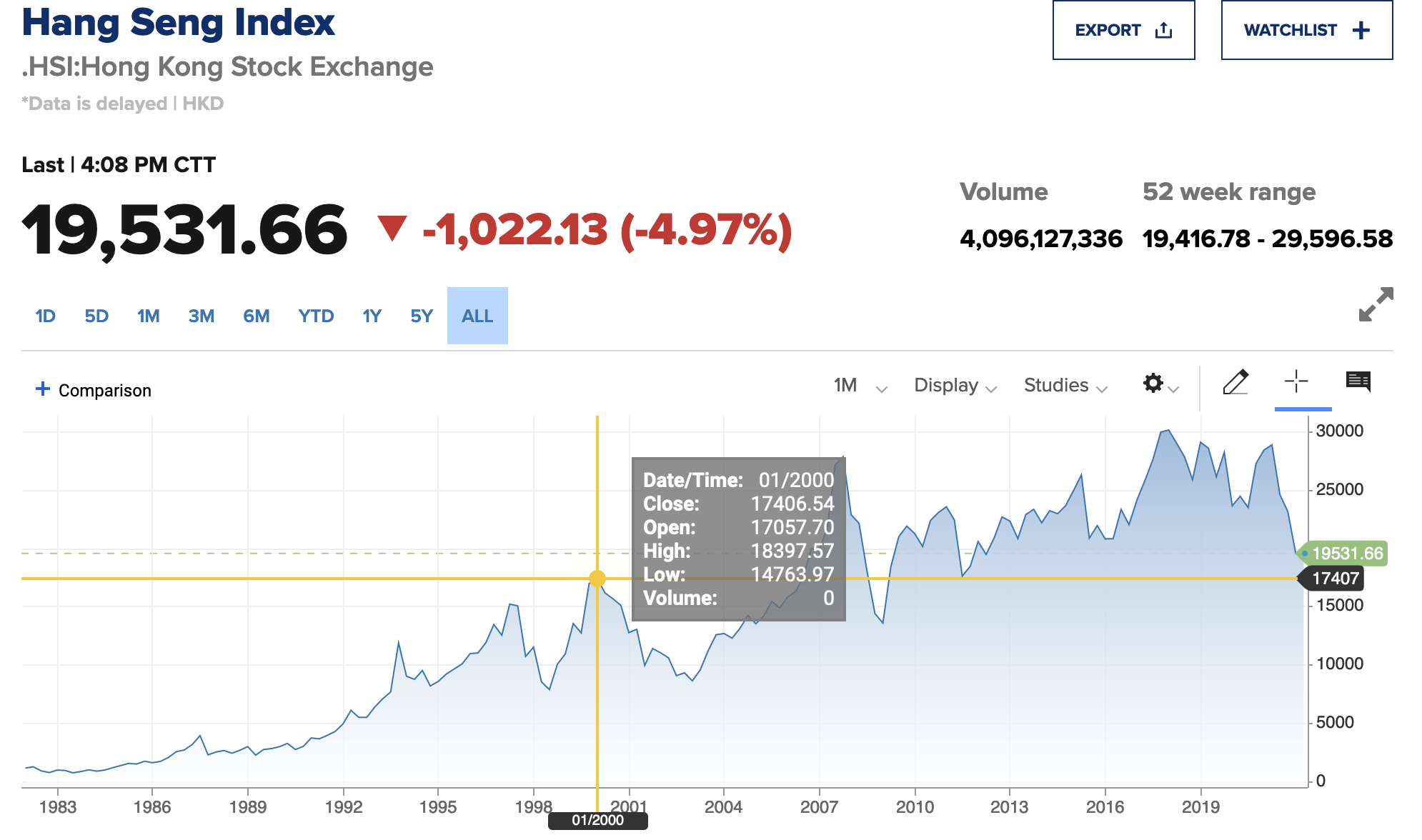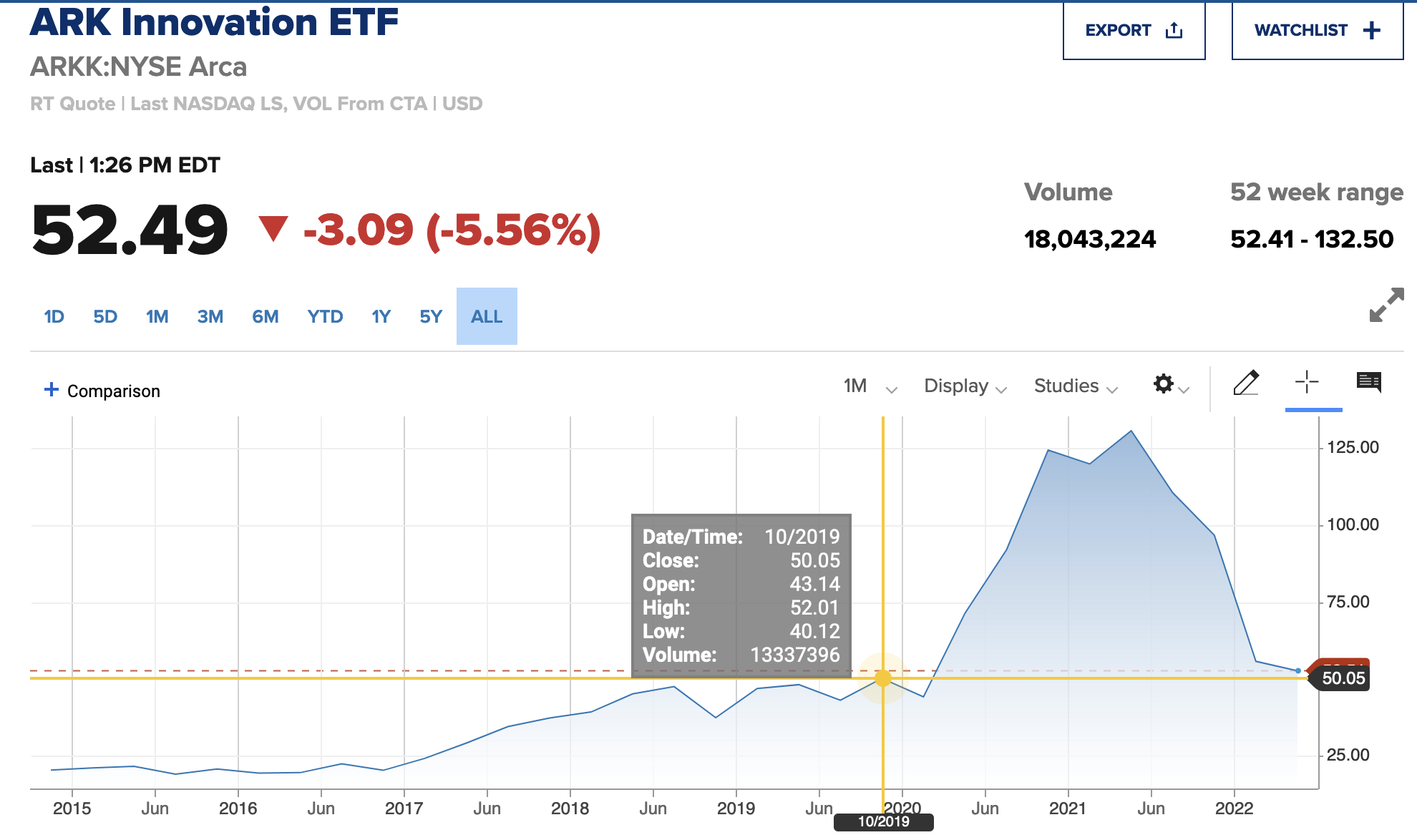A new generation of would-be investors is learning the hard way that even world-changing companies and technologies tend to be horrible investments when bought at too high a price multiple.
Today, another tech-bubble 2.0-darling Netflix is fathoming a 52 week low, -52% from its recent November high, and below its March 15, 2020, closing low of $336, with no bottom yet likely. See Netflix hits lowest point since March 2020–when the pandemic started.

Hong Kong’s Hang Seng index retested its March 2020 low in February and failed to hold there. Dropping a further 14% since then the index is back to where it was in 2006 and just 6% above its January 2000 cycle peak (shown below since 1983).

This is typical of how secular bears move: from extreme over-valuation and speculative peaks, it’s common for stocks and stock indices to give back all their prior cycle gains.
As this happens, stock pickers and funds who looked brilliant during the inflation phase are routinely denounced and fired as frauds and failures in the give-back. 2021 ‘Star-fund’ Cathie Wood’s Ark Innovation ETF is one high-profile example. After leaping 164% during COVID-mania, the fund’s -60% since February 2021 has deleted all progress since the fall of 2019 (as shown below). Like bugs to a light, those attracted to the fund in 2021 are worse for the experience.
In truth, Wood and other price-indiscriminate buyers do the same thing throughout: passively riding risk up and down, they have no plan to capture lasting value.
In the weeks and months ahead, other high beta sectors like commodities, corporate credit and financials are also due to retest their 2020 lows. Only then will we have a sense of where this bear market may ultimately bottom.
The give-back phase will catch most off guard, but it was always our base-case scenario.

